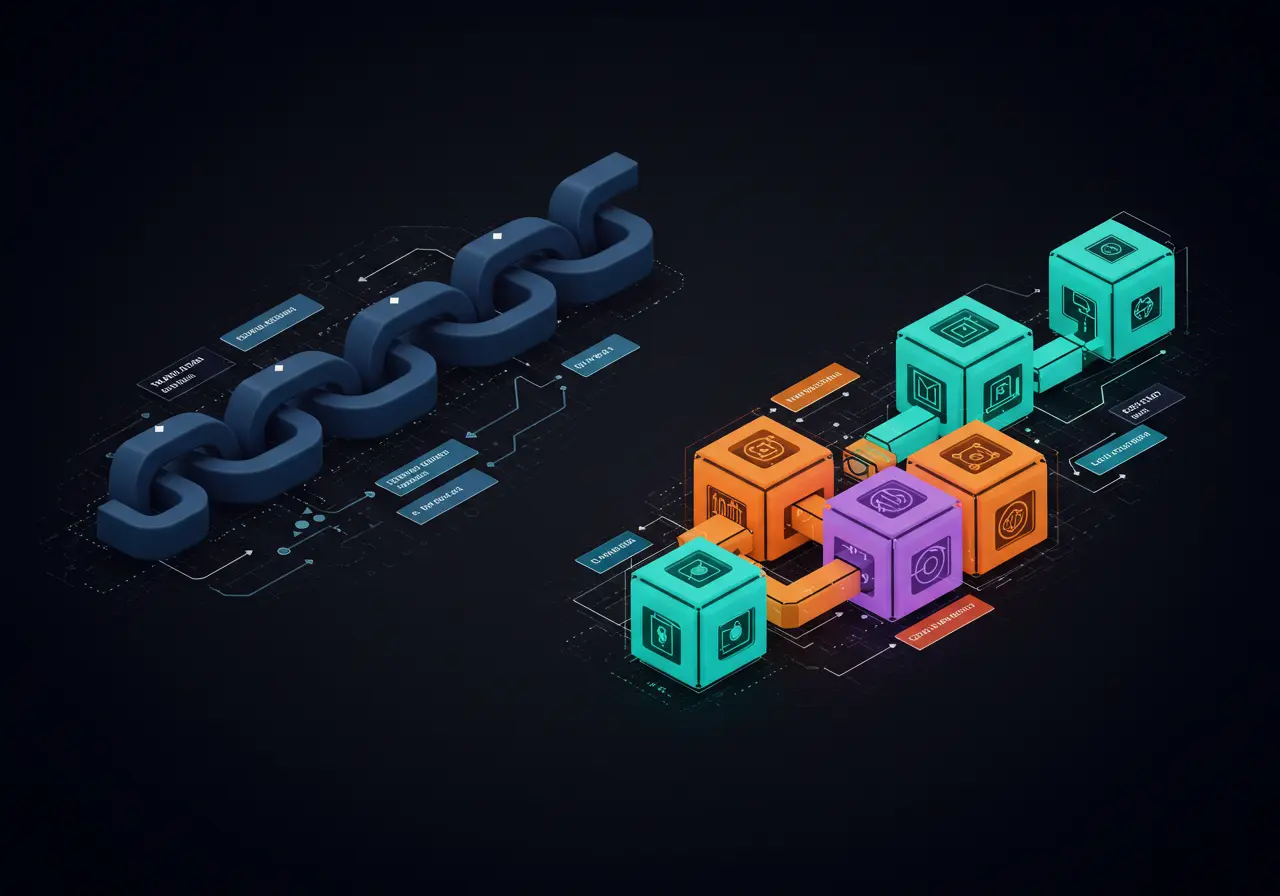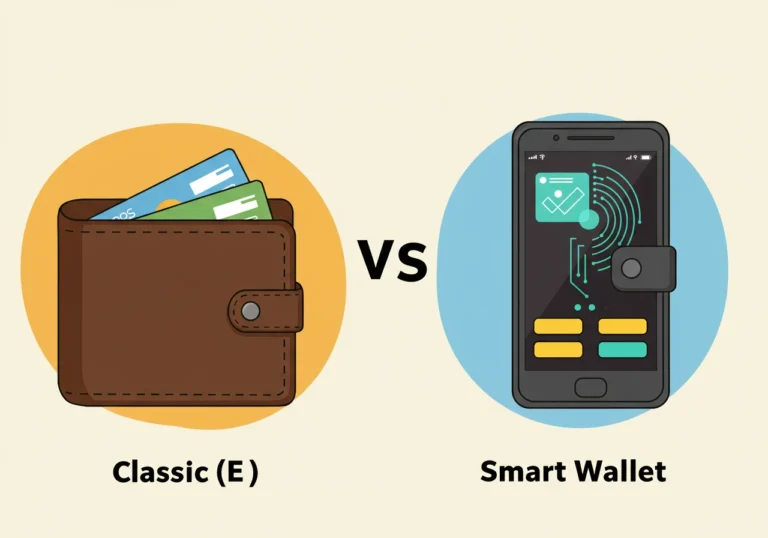Modular Blockchains: Is Celestia the Future of Crypto Security?
Modular Blockchains break big tasks into smaller, focused pieces. In the next paragraphs I’ll explain what that means, why it matters for security, how Celestia approaches the problem, and what the trade-offs are. I’ll use simple examples and practical tips so you leave feeling clear and confident.
What are Modular Blockchains?
A traditional blockchain tries to do many things at once: it stores data, processes transactions, and enforces rules. That can make it slow or costly as the network grows. Modular blockchains separate those jobs. One layer handles data availability, another handles execution (running smart contracts), and others handle consensus or settlement.
This separation creates focused systems. Imagine a restaurant where one kitchen bakes bread, another cooks pasta, and a cashier handles payments. Each team becomes good at its job. That is the idea of Scalable modular blockchain technology: dedicated systems working together, each optimized for a specific role.
Because tasks are separated, networks can scale more easily. They can also mix and match features: a privacy-focused execution layer can plug into a data layer that promises strong availability. This is where Interoperable modular blockchain solutions become powerful.
Celestia in simple terms: a data layer for many chains
Celestia is a project built around the idea that many chains can share a reliable data layer. Instead of each chain storing all its data on its own, they publish transaction data to Celestia. Celestia focuses on secure, efficient data publication and availability. The result is a single layer that many execution systems can trust.
Think of Celestia as a public ledger that’s excellent at keeping records available and verifiable. Other chains can use those records to prove what happened without needing to secure everything themselves. That is the core of Decentralized modular blockchain systems: a shared, honest place for data.
How does Celestia protect funds — the security idea
When we talk about crypto security, we care that transaction history can be checked and that bad actors can’t rewrite records. Celestia helps by guaranteeing data availability: it makes it hard for anyone to hide or erase the records that other chains depend on. If a chain posts its data to Celestia, anyone can fetch that data and re-run the transactions to confirm they are valid.
This model reduces certain risks. For example, if an execution layer falsely claims something happened, users can look back at the data published on Celestia and challenge that claim. This contributes to a Secure modular blockchain architecture because the data layer acts as a shared truth source.
Where execution and data meet: how smart contracts fit in
Most smart contract logic runs on execution layers, which may be separate from Celestia. That means developers can build contracts with specific needs — faster execution, advanced privacy, or permissioned access — and still rely on Celestia’s data availability guarantees.
This separation supports Smart contract integration in modular blockchains because developers can choose execution environments that match their goals while keeping data integrity anchored on a trusted layer.
Tokenization and privacy features in modular systems

Modular chains make it easier to mix token features and privacy tools. For instance, an execution layer can implement privacy-enhancing techniques while publishing only non-sensitive proofs to Celestia. That lets the system keep user balances private while ensuring records needed for verification are available.
This flexibility supports Tokenization features in modular blockchains and Privacy-enhancing techniques, where token rules and privacy tools are combined in ways that were harder on monolithic chains.
Energy and governance: two pieces that matter
Celestia and similar projects aim to be efficient. Because a data layer can be specialized, it may use lighter, more energy-efficient protocols. That’s the hope behind Energy-efficient modular blockchain protocols. Less duplication of effort across many chains can lower the total energy used by the ecosystem.
Governance also changes. Instead of one giant chain deciding everything, different layers and zones may have their own governance models. That allows specialized Governance mechanisms in modular blockchains, where communities decide locally what suits them best. But it also requires careful coordination so upgrades and policy changes don’t break users’ expectations.
Permission models and enterprise needs
Some organizations need permissioned environments for compliance or privacy. Modular designs can support Permissioned modular blockchain networks by allowing private execution layers to publish select data to a public data availability layer. This balance can help enterprises adopt blockchain tech while still meeting regulators’ rules.
Practical benefits: speed, cost, and composability
Because execution layers don’t have to duplicate data availability and consensus work, they can be faster and cheaper. That is the appeal of Scalable technology. Composability — the ability for different systems to work together — also improves. Developers can mix and match execution environments and use a shared data layer, enabling Interoperable solutions.
In everyday terms, it’s like using a shared road system instead of building a private street for every new neighborhood. Costs drop and connections become easier.
Risks and trade-offs to keep in mind
No design is perfect. Modular systems introduce both new benefits and new risks:
- Complexity of coordination: Multiple layers must work together. If one layer changes rules unexpectedly, it can disrupt others. That calls for careful governance and standards.
- Reliance on a shared data layer: If Celestia ever had prolonged outages or serious bugs, multiple execution layers could feel the impact. So the data layer must be highly reliable.
- Security assumptions shift: Some security responsibilities move from execution layers to the data layer. That changes how audits and proofs are designed.
- User experience: Users may need to trust multiple systems rather than one. That can increase the steps needed for certain actions, at least initially.
Understanding these trade-offs helps when deciding whether modular approaches fit a given application.
Real examples and use cases
- A DeFi app that needs fast execution but not full consensus can run on a lightweight execution layer and post data to Celestia. Users get quick trades and a secure public record.
- A privacy-focused payments app can keep transaction details private on its execution layer while posting compressed proofs to the data layer for auditability.
- Enterprises can run permissioned execution layers for sensitive processes and still publish necessary proofs to a public, verifiable data layer.
These scenarios show practical paths for Secure modular blockchain architecture in the real world.
How tokenization and smart contracts evolve in modular systems
Token behavior can be richer when smart contract logic lives on specialized execution layers. These layers can focus on advanced tokenomics or custom rules, while the data layer ensures that token transfers and states are published reliably. This combination supports evolving Tokenization features in modular blockchains and makes it easier for developers to innovate.
Privacy, audits, and community oversight
Even with modular designs, audits and community checks remain essential. Projects should publish audits and invite independent reviewers. Privacy-enhancing techniques can be paired with transparency features so that auditors can verify correctness without exposing user data.
Community oversight is part of Governance mechanisms in modular blockchains, and it helps keep projects accountable.
Is Celestia the future of crypto security?
Celestia offers a clear way to rethink how chains scale and secure data. By focusing on data availability and letting execution layers specialize, it can reduce duplication and unlock new kinds of chains. That makes it a strong candidate for the future of Scalable modular blockchain technology and Interoperable modular blockchain solutions.
But the future is plural. Modular approaches are promising, yet they will coexist with other designs. The best path likely combines modular and monolithic ideas, depending on use case. For high-value custody, people may still prefer conservative setups. For rapid innovation and niche apps, modular systems can be ideal.
Practical advice for users and builders
If you’re a user or developer exploring modular chains:
- For users: Pay attention to which layer handles what. Understand where your data is published and who can change rules. Use wallets and bridges that clearly explain the flow.
- For builders: Design clear interfaces between layers. Publish audits and focus on data availability guarantees. Aim for energy-efficient protocols and strong governance practices.
These practical steps help the ecosystem mature responsibly.
Conclusion — a balanced view
Modular Blockchains are a thoughtful step forward. They break work into parts, allow specialization, and open up new design possibilities. Celestia’s focus on data availability shows how a shared, secure layer can support many execution environments. This model touches on Decentralized modular blockchain systems, Secure modular blockchain architecture, and Energy-efficient modular blockchain protocols.
Still, modular systems bring coordination challenges and new trust assumptions. The key is careful design, strong audits, transparent governance, and community oversight. If that balance is achieved, Celestia and similar projects could become central pieces of the crypto landscape — not the only answer, but an important part of a safer, more scalable future.
Look, it feels like moving from building entire towns by yourself to joining a shared infrastructure where each team does what it does best. That change can make life easier — and safer — for everyone.
Quick recap
- Modular Blockchains separate data availability, execution, and consensus to improve scalability.
- Celestia offers a dedicated data availability layer that many chains can use.
- This design supports Interoperable modular blockchain solutions and richer Tokenization features in modular blockchains.
- Trade-offs include coordination complexity and reliance on the shared data layer.
- Good governance, audits, and privacy tools are essential for long-term security.
Key takeaways
- Modular design means focused layers with clear roles.
- Celestia specializes in making transaction data available and verifiable.
- Execution layers can be optimized for speed, privacy, or permissioned use.
- Modular systems can be more energy-efficient overall.
- Governance mechanisms must be robust to avoid surprises.
- Smart contract integration is more flexible in a modular world.
- Privacy-enhancing techniques can pair with public data proofs.
- Users should understand which layer they trust and why.
- Builders should prioritize audits and clear interfaces between layers.

Hello, I’m Edmilson Dias, founder of CoinBringer. I created this platform to guide people through the fast-moving world of cryptocurrency with clarity and safety. With years of research in blockchain and digital security, my goal is to translate complex topics into practical knowledge, offering reliable tutorials, safety insights, and guidance for both newcomers and experienced users.
Discover more from CoinBringer
Subscribe to get the latest posts sent to your email.







